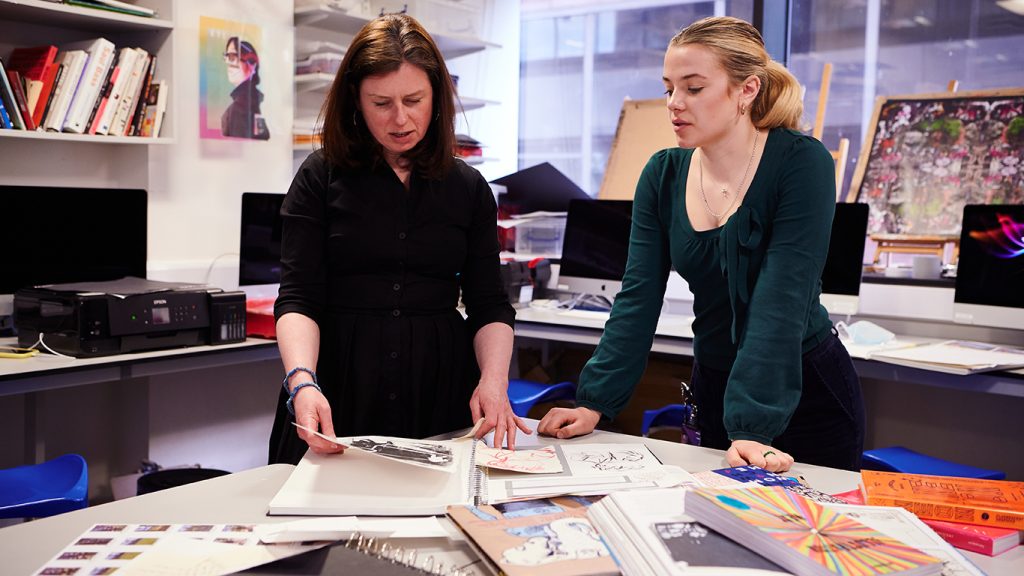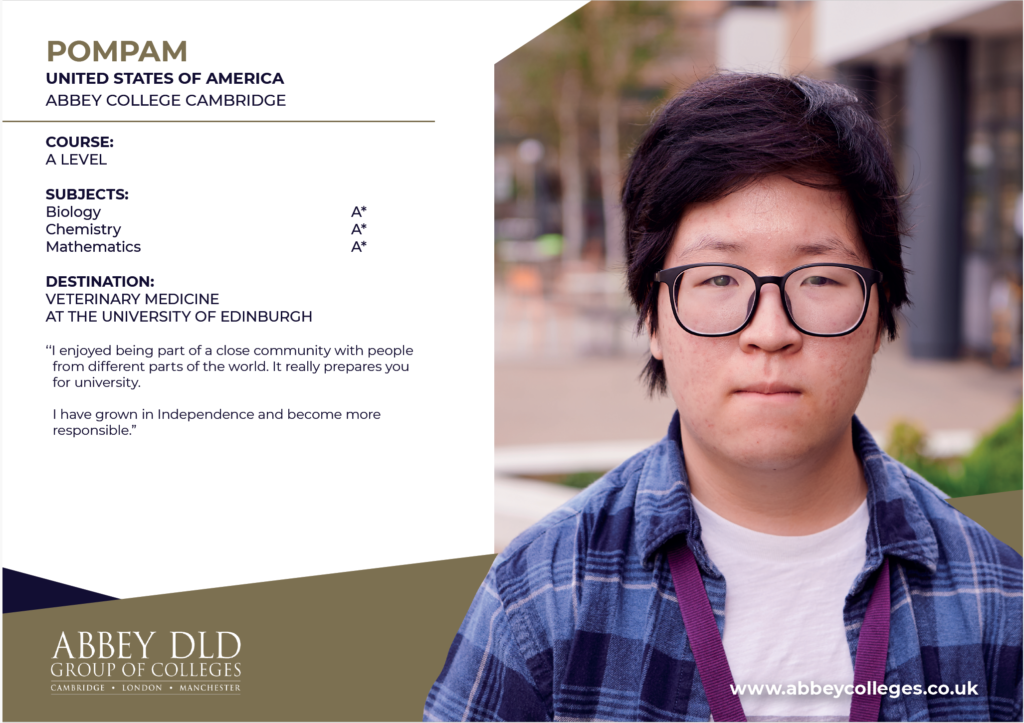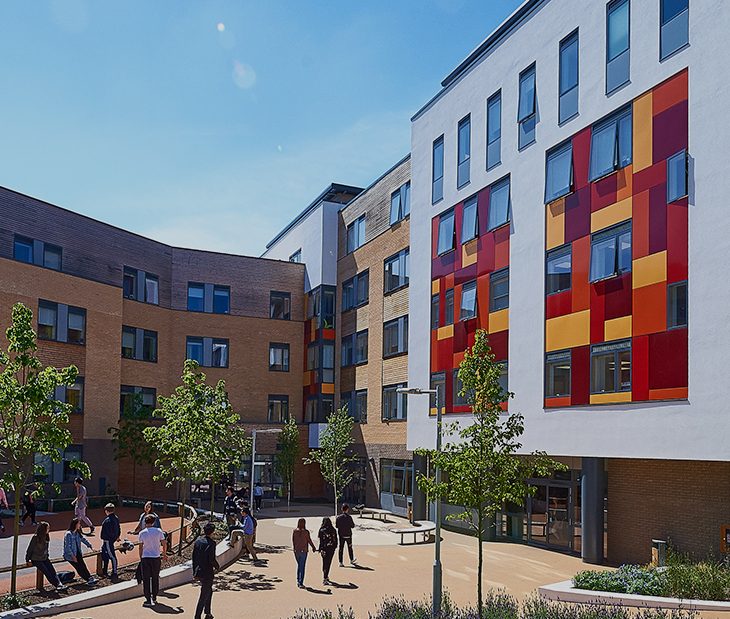Comparing the US and UK Education Systems: Essential Guide for American Students Planning to Study in the UK.
12th November 24

With the rise in cross-continental education aspirations, more American students are looking to the UK as an appealing option for education. But how does the British education system compare to the familiar K-12 structure of the United States? Understanding the key differences—from grading scales and academic paths to standardised testing and school types—can help prospective U.S. students and their parents make an informed decision about studying abroad. This guide breaks down the essentials of both systems, offering a clear comparison to help students navigate their academic journey in the UK.
United States Education System
School Structure in the U.S., education is generally mandatory from age 5 or 6 up to 16, though this may vary by state. Known as K-12 education, the system is split into distinct phases:
- Elementary School: Kindergarten through 5th grade
- Middle School: 6th grade through 8th grade
- High School: 9th grade through 12th grade
In some areas, students attend junior high after 5th or 6th grade and then senior high for grades 9-12. Other regions consolidate Kindergarten through 8th grade in elementary schools before students progress to high school for the final four grades. Variations in structure and school types exist to accommodate diverse educational needs.
The U.S. school system comprises both state-funded and privately funded institutions. State-funded schools, known as public schools, are free, and students typically attend schools based on district assignments. Private schools, which charge tuition, operate independently of many public regulations and are often affiliated with religious organisations.

British Education System Overview for U.S. Students
The British education system is structured into distinct stages, each catering to specific age groups and designed to guide pupils through important educational milestones.
- Primary Education (Key Stages 1 and 2): This stage is compulsory for children aged 5-11 and covers core subjects such as English, maths, and science.
- Secondary Education (Key Stages 3 and 4): For pupils aged 11-16, secondary education includes Key Stage 4, where students prepare for their General Certificate of Secondary Education (GCSE) These exams are essential for progression to further education.
- Further Education (Key Stage 5): After completing their GCSEs, students aged 16+ progress to Further Education (FE), where they can choose between A-levels, vocational courses, or apprenticeships. These options prepare students either for university (Higher Education) or for entering a specific career.
Primary Education in the USA
In the United States, primary education is designed to establish a strong foundation in literacy, numeracy, and essential life skills. Beginning with pre-primary programmes that are largely voluntary, the U.S. system focuses on gradually introducing core subjects to support children’s early learning journey.
Pre-Primary Education
Pre-primary education in the U.S. includes preschools and nurseries for children aged three to five. Enrolment is voluntary, and both state-funded and private providers offer these early learning opportunities. Some institutions primarily provide childcare, while others focus on developmental education to prepare children for formal schooling. The federally funded programme “Head Start” offers preschool opportunities to disadvantaged children, promoting school readiness from an early age.
Pre-kindergarten (pre-K) programmes are also available for children in the year before they begin kindergarten. These programmes are designed to prepare children for school through foundational learning.
Primary Education
Elementary schools, covering the early years of primary education, concentrate on core subjects like English and maths, while also including other areas such as:
- Arts
- Crafts
- Health
- Music
- Physical education
- Science
- Social Studies
In addition, under the “No Child Left Behind Act,” students in grades 3-8 complete state assessments in reading and mathematics to gauge their academic progress.
Pre-Primary and Primary Education in the UK
In the UK, children typically attend nursery, or pre-primary education, before beginning formal schooling. This early education stage offers children up to age five an introduction to a school-like environment, helping them develop social and early learning skills before entering primary school. Most children attend nursery part-time during term time.
Primary education in the UK includes Reception, Key Stage 1, and Key Stage 2. Reception is the first year of primary school, with most children starting full-time in the September after their fourth birthday, though formal schooling is not compulsory until age five.
Key Stages 1 and 2 cover ages 5 to 11 (Years 1-6), focusing on essential foundational skills that support further learning. At the end of Key Stage 2, in Year 6, pupils typically transition to a secondary school.
While many independent schools in the UK provide continuous education from Key Stage 1 through to Key Stage 5, most state schools finish at Key Stage 2 or begin at Key Stage 3. Generally, students attend a primary school for Key Stages 1 and 2 before moving to a secondary school at age 11, where they continue with Key Stages 3, 4, and 5.
Watch Interview with Year 13 Student Abril from US
The Abbey DLD Group of Colleges (ADLD) consists of three independent sixth form colleges located in Cambridge, London, and Manchester, offering a wide range of academic study programmes.
Secondary Education in the USA
· Lower Secondary
Middle School/Junior High School
In some states, middle school serves as a bridge between primary and secondary education, while others begin secondary education with junior high. At this stage, the curriculum becomes more flexible, with both core and elective subjects. Core subjects generally include English, maths, science, and social studies, while electives may include art, drama, music, and technology.
· Upper Secondary Education
High School/Senior High School
Students earn a High School Diploma upon completing Grade 12, awarded uniformly to all who meet graduation requirements. Different tracks are available depending on students’ plans after high school. Students preparing for higher education follow an academic track with advanced courses and may take Advanced Placement (AP) subjects for college-level content.
For those pursuing university, Advanced Placement (AP) courses offer college-level content, potentially earning students college credits. Standardised tests like the SAT and ACT assess college readiness, with the ACT focusing on high school subjects and the SAT measuring skills in maths, reading, and writing.

Secondary and Further Education in the UK
In the UK, secondary and further education are organised into three key stages: Key Stage 3, Key Stage 4, and Key Stage 5.
- Key Stage 3 (Ages 11-14): At this stage, students experience a shift towards more rigorous academic work. While they continue to follow a broad curriculum aligned with the national curriculum, they begin focusing more on core subjects. Toward the end of Year 9, students select subjects they will study at GCSE level.
- Key Stage 4 (Ages 14-16): During Key Stage 4, students focus on the subjects chosen for their GCSEs. Core subjects, including maths, English, and science, remain mandatory, while students also choose elective subjects in consultation with parents and teachers. After two years of study, students take their GCSE exams, a critical milestone that demonstrates their proficiency across selected subjects.
- Key Stage 5 (Ages 16-18): Known as Further Education, Key Stage 5 offers students the choice of A Levels, BTECs, or other vocational qualifications. This stage serves as a bridge to higher education or specialised career pathways, helping students prepare for university or the workforce.

Bachelor’s Degrees in the USA
In the USA, Bachelor’s degree programmes generally span four years, following a liberal arts model that requires students to take a broad range of general education courses before specialising. This system allows students to explore various disciplines, providing them with a well-rounded education before declaring a major, usually at the end of their second year. The admissions process in the USA is holistic, assessing a combination of academic achievements, standardised test scores (such as the SAT or ACT), extracurricular activities, personal essays, and letters of recommendation. American universities often value a student’s contributions beyond academics, making it essential for applicants to demonstrate a well-rounded profile. Many universities also conduct interviews, either in-person or virtually, as part of the admissions assessment. This process aims to gain a complete picture of the applicant, not only in terms of academic prowess but also personal interests and potential campus involvement.
Bachelor’s Degrees in the UK
In the UK, Bachelor’s degree programmes are typically structured as three-year courses, although some fields, such as engineering or those with placement years, extend to four years. UK degrees are highly specialised from the outset, with students applying directly to study a specific subject. This approach allows students to concentrate intensely on their chosen field, providing an in-depth education that culminates in a focused degree. Admissions for UK universities are coordinated through UCAS (Universities and Colleges Admissions Service), where students submit a single application detailing their academic achievements and a personal statement tailored to their chosen subject. Certain competitive courses, like Medicine or Law, may require additional entrance exams (such as BMAT or LNAT) and possibly interviews, particularly at institutions like Oxford and Cambridge. The UK’s application process largely centres on academic readiness for a particular subject, emphasising a candidate’s qualifications and passion for their chosen field of study.
Student Experience: Moving from the USA to DLD College London
United States of America vs British Education System Comparison Table
To provide a clear overview, the comparison table below highlights the key differences between the US and British education systems:
| Education Stage | United States (U.S.) | United Kingdom (U.K.) |
| Pre-Primary Education | Ages 3-5 (Preschool, optional) | Ages 3-5 (Nursery, optional) |
| Primary Education | Ages 5-11 | Ages 5-11 |
| Elementary School (Kindergarten – 5th Grade) | Primary School (Reception, Key Stages 1-2) | |
| Lower Secondary Education | Ages 11-14 | Ages 11-14 |
| Middle School/Junior High (6th-8th Grade) | Secondary School (Key Stage 3) | |
| Upper Secondary Education | Ages 14-18 | Ages 14-16, then 16-18 |
| High School (9th-12th Grade) | Secondary School (Key Stage 4: GCSEs, ages 14-16) | |
| Further Education (Key Stage 5: A-Levels, ages 16-18) | ||
| Higher Education (Bachelor’s Degree) | 4 years, liberal arts focus | 3 years (4 years for some courses), specialised focus |
Why Study at Abbey DLD Colleges?
The Abbey DLD Group of Colleges (ADLD) consists of three independent boarding schools located in Cambridge, London, and Manchester, offering a wide range of academic study programmes.
At Abbey DLD we strive to achieve the highest academic standards whilst providing a welcoming, safe, high-quality learning and boarding experience for students from around the world. Our aim is to help our students achieve the academic success needed to progress to the UK and the world’s top universities, whilst also developing the personal skills and qualities to succeed at university and beyond.
We offer GCSEs, BTECs, A Levels and International Foundation Programmes to give our British and International students access to UK and international universities.
Do You know:
Every year Abbey DLD Students achieve outstanding results and move on to join some of the world’s most prestigious and highly-ranked universities. In 2023, 41% of our A Level students and 38% of our Foundation students progressed to Russell Group Universities, and 14 of our students progressed to study at Oxbridge Colleges or Medical School.
Conclusion
In conclusion, understanding the core differences between the U.S. and UK education systems is essential for American students considering a move to study in the UK. While the U.S. system offers a broad, flexible curriculum allowing exploration before committing to a major, the UK’s structured, specialised pathways offer a direct focus on chosen subjects from an early stage. Both systems have their unique strengths, but the British model provides a more streamlined approach for those clear about their academic and career goals. This guide has hopefully clarified these distinctions, helping students and parents make an informed choice about embarking on their educational journey in the UK.
Please note that our three colleges, each with its own unique character, all share a common goal: to deliver outstanding educational and residential experiences for students aged 13 to 21. We offer GCSE, A Level, BTEC and International Foundation Programme courses. We do not provide university-level undergraduate or postgraduate education.
Blog Author

Wisam Afisa
Senior International Regional Manager (Middle East, Africa & Americas)
E: Wisam.Afisa@abbeydld.co.uk
T: +44 7935 133465
Get in touch today:
Since 1931, the Abbey DLD Group of Colleges has been synonymous with high-quality education, top university destinations, and enriching academic and pastoral experiences. Abbey DLD students graduate equipped with the skills to progress in their university studies and future careers, with friends from all around the world, and having made memories to remember for a lifetime.
Want to learn more about studying at the Abbey DLD Group of Colleges? Simply complete the form below and one of our admissions advisors will be in touch with you shortly.







